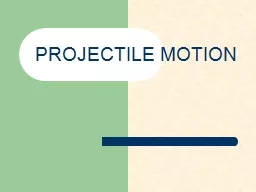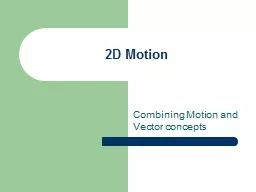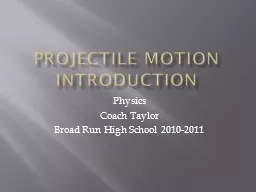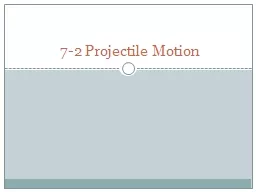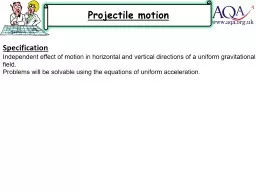PPT-PROJECTILE MOTION Projectile Examples
Author : test | Published Date : 2018-03-12
Tennis ball Golf ball Football Softball Soccer ball Bullet Hockey puck Basketball Volleyball Arrow Shot put Javelin These are all examples of things that are projected
Presentation Embed Code
Download Presentation
Download Presentation The PPT/PDF document "PROJECTILE MOTION Projectile Examples" is the property of its rightful owner. Permission is granted to download and print the materials on this website for personal, non-commercial use only, and to display it on your personal computer provided you do not modify the materials and that you retain all copyright notices contained in the materials. By downloading content from our website, you accept the terms of this agreement.
PROJECTILE MOTION Projectile Examples: Transcript
Download Rules Of Document
"PROJECTILE MOTION Projectile Examples"The content belongs to its owner. You may download and print it for personal use, without modification, and keep all copyright notices. By downloading, you agree to these terms.
Related Documents

